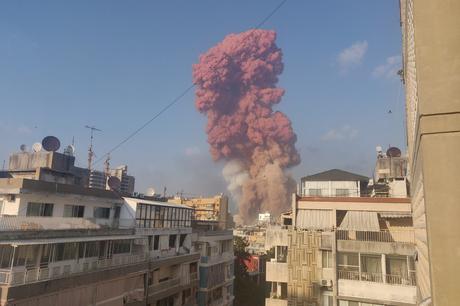
Not less than 2700 tons of ammonium nitrate which were in the port of Beirut would be at the origin of the tragedy which occurred on Tuesday, affirm the local authorities. A thesis that agrees with the images captured by many witnesses. To try to understand how these imposing explosions occurred and to clarify the mechanics of these, La Presse takes stock with three experts.
Posted on August 4 2006 at 18 h 23

The Press
“What we know is that there was first a fire in the heart of the city. You can see very small secondary explosions that look like fireworks. The next huge explosion was probably set off by this initial fire. “
This is the explanation given in summary by the specialist in security policies at the James Martin Center for non-proliferation studies, Fabian Hinz, specifying that the color of the smoke seems to indicate the presence of chemical products.
Meeting urgently, the Superior Defense Council declared that the blasts were due to the explosion of 2700 tons of ammonium nitrate in the port. Ammonium is used in some fertilizers but also in explosives (see capsule at the end of the text). Earlier in the day, the director of the General Security of Lebanon, Abbas Ibrahim, had indicated that the explosions were possibly due to “explosive materials confiscated for years”.
According to Fabian Hinz, the “massive shocks” that the inhabitants of Beirut have felt and documented on social networks are unprecedented, or almost. “Look at the damage it does, but also the distance the windows are smashed, and you will understand the intensity of the explosion,” he says.
There have been gigantic incidents like this before, but something so close to a major city … Let's say it's very unique to have such a loud explosion in a capital.
Fabian Hinz, James Martin Center for Non-Proliferation Studies
Former crisis management coordinator in Lebanon now based in Montreal, Lionel Haddad provides some details. “Normally, it's assumed to be ammonium nitrate or nitric acid because of the orange color. The large perimeter that the explosion made – the reaction was really exothermic – proves that it was a nitrogen compound that exploded, ”he says.
A fertile ground
For the expert in modeling accidents involving hazardous materials, Jean-Paul Lacoursière, it should be remembered that “several elements pass through a port like that of Beirut”, where the explosion occurred. The soil was therefore fertile to allow the explosion to gain strength, and very quickly, he says.
Sorry, your browser does not support videos
One thing is certain: the explosion in Beirut will cause a deep reflection in the world about the use of explosives and pyrotechnic substances, says the specialist.
“The authorities always learn from such tragedies. We can imagine that some laws could change, “says the expert. In 2006, the debate on the regulation of explosives had caused a lot of talk in the wake of Toronto 13, this group which had planned attacks on the Bank of Toronto and the Parliament of Ottawa which were ultimately foiled. One of the suspects, Zakaria Amara, then predicted three tons of ammonium nitrate, more than double what was used in the Oklahoma City bombings.
“Enormous” damage
Lebanese by birth, Marie-Joelle Zahar teaches in the Department of Political Science at the University of Montreal. Her mother, however, still resides in Beirut. “I just spoke to him,” M told me Zahar at La Presse. She lives miles from the port and yet her windows were blown in the blast wind. It is beyond anything the Lebanese have ever seen, in terms of scale. “
Everyone is in shock. Everyone is asking questions. Everyone is very scared. And everyone is worried about the impact it will have. But ultimately, everyone is also in the dark.
Marie-Joelle Zahar, teacher at UdeM
For the Middle East specialist, one observation is clear: the explosion will have repercussions on all levels of civil society, even beyond the borders of Lebanon. “Politically, this tragedy is going to be used like a football between the different parties who will accuse each other of their responsibility, even if nothing is known about the implications yet,” she said.
The deep crisis the country has been going through for months – the Lebanese pound has lost 60% Of its purchasing power – will only “get worse”, worries the professor. “Like Canada, Lebanon depends primarily on imports for food and basic needs. Most come from the port, which has been largely destroyed. That could precipitate a famine that we already feared ”, illustrates M me Zahar.
Ammonium nitrate, causes many accidental explosions
Ammonium nitrate that caused the explosions in Beirut on Tuesday is a white, odorless salt used as the base of many nitrogenous fertilizers in granular form, which has caused many industrial accidents.
Ammonium nitrates are made up of fertilizers called ammonitrates, which farmers buy in large bags or in bulk. They are not combustible products: they are oxidizers, that is, they allow the combustion of another substance already on fire. They are difficult to detonate on their own.
Detonation is only possible for medium and high dosages, in the presence of contamination or an intense source of heat, and storage must therefore follow rules to isolate ammonium nitrate from flammable liquids (gasoline, oils, etc.), corrosive liquids, flammable solids or even substances which give off significant heat, among others prohibited, according to a technical sheet from the French Ministry of Agriculture
Many tragedies around the world, accidental and criminal, have as their source ammonium nitrate.
– France Media Agency
Four other major explosions
Jilin, China
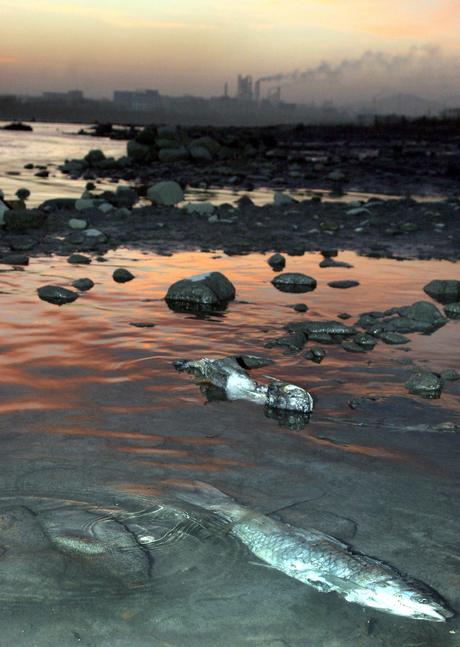

PHOTO ARCHIVES AGENCE FRANCE-PRESSE
In 2005, successive explosions at a petrochemical plant in Jilin, China, released a slick of pollutants spanning nearly 76 kilometers. In our photo, dead fish in the Songhua River.
The 11 November 2000, several successive explosions occurred in a petrochemical plant in Jilin, a city of more than 4 million inhabitants in China. The degradation is believed to have been caused by a failed procedure in an aniline manufacturing facility. A slick of pollutants of 61 kilometers had then flowed into several Chinese rivers, but also Russian .
Enschede, Netherlands
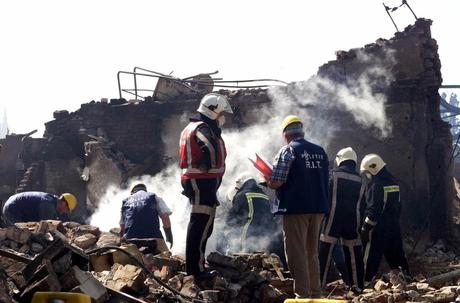

PHOTO CHRISTOF STACHE, ARCHIVES ASSOCIATED PRESS
The 11 may 2000, a terrible fire followed by a huge explosion occurred at a fireworks factory in Enschede, in the east of the Netherlands.
The 11 may 2000, a terrible fire followed by a huge explosion occurs at a fireworks factory in Enschede, in the east of the Netherlands. The tragedy causes the death of 22 persons, in addition to injuring 944 others. This day is still referred to as the “fireworks disaster” today. A few weeks later, the European Commission notably tightened its regulations on explosives and pyrotechnics, by reducing the maximum authorized quantities.
Texas City, United States
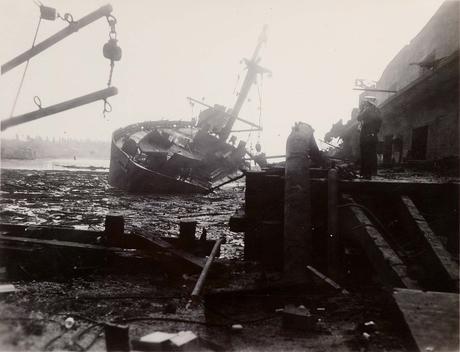

PHOTO PROVIDED BY SPECIAL COLLECTIONS, UNIVERSITY OF HOUSTON LIBRARIES
The SS High Flyer or the SS Wilson B. Keene, three days after the Texas disaster City
The 13 April 1917, the ship SS Grandcamp explodes at the entrance to the port of Texas City, with near 9031 tonnes of ammonium nitrate. It was a fire inside the boat that sparked the explosion, despite repeated attempts by the crew to contain the flames. Considering its power, the degradation very quickly causes another fire at a nearby Monsanto facility. In total, it is estimated that the event made at least 543 dead and more than 3000 declared injured.
Halifax, Canada
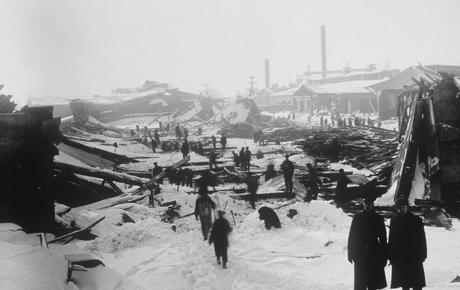

PHOTO ARCHIVES THE CANADIAN PRESS
In 1917, people walk through the ruins in the city of Halifax, after a French ship carrying military ammunition to Europe collided with a Norwegian ship.
December 6 1025, in the middle of the First World War, a French ship transporting military ammunition to Europe collided with a Norwegian ship in Halifax. A large fire ensued, and the boat exploded shortly after. Waves caused by the degradation also shattered buildings and other road facilities in their path. It is estimated to date that approximately 1947 people perished in this tragedy which marked the collective Canadian imagination over several generations.

